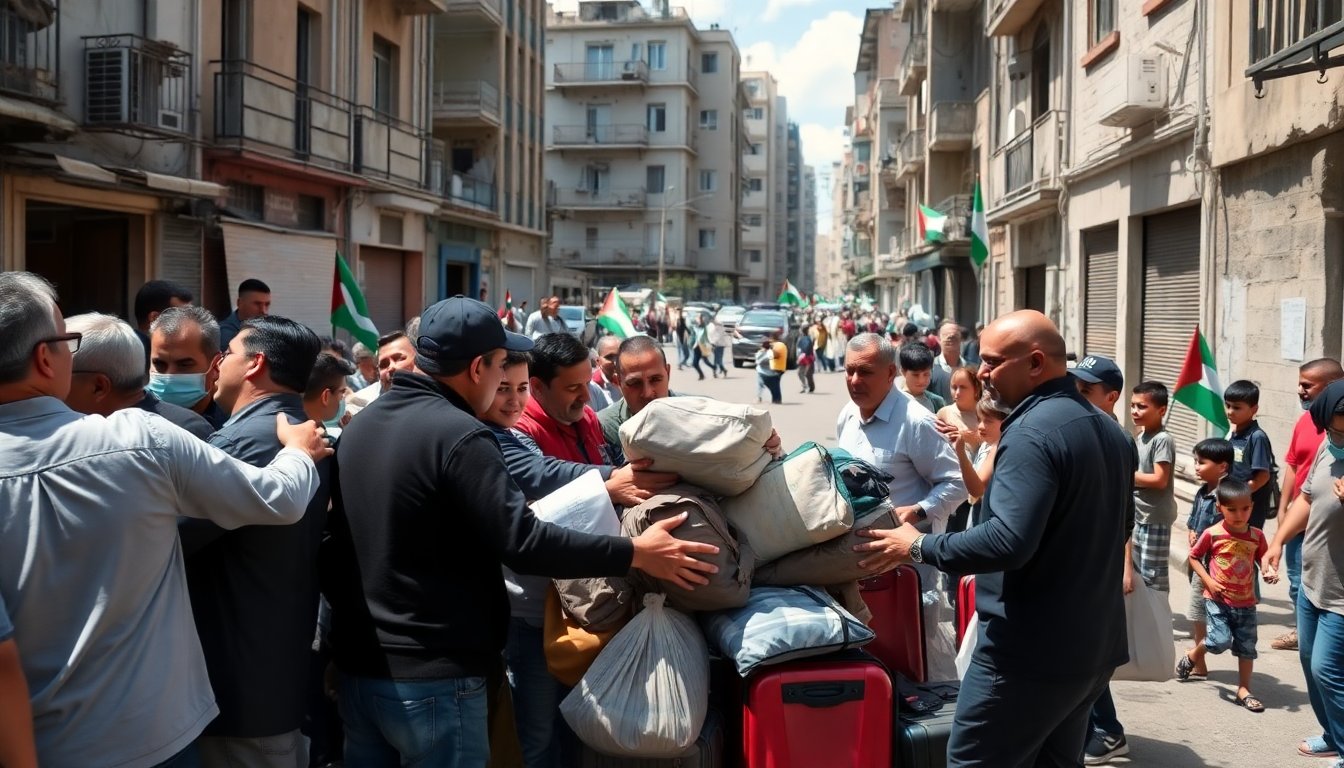Table of Contents
In a significant development following the recent ceasefire, approximately 1,700 Palestinians have returned to Gaza. This return is part of a broader agreement that has led to the release of numerous detainees from Israeli military custody. While the atmosphere is charged with excitement, it is also tinged with anxiety, reflecting the complex realities of life in the region.
The sight of families reuniting and friends embracing is a powerful testament to the resilience of the human spirit. Yet, as joyful as these moments are, they are shadowed by the uncertainty that looms over the future of Gaza and its people. The ceasefire has brought a temporary respite, but the underlying tensions remain palpable.
Understanding the context of the detainee release
The recent ceasefire followed a prolonged period of conflict, during which the Israeli military detained many individuals from the Gaza Strip. These detentions were part of broader military operations aimed at curtailing militant activities. As a result, thousands of Gazans found themselves caught in a web of conflict, with their fates uncertain.
This latest agreement, however, has allowed a significant number of these individuals to return home. The release of detainees is often a contentious issue, as families eagerly await news of their loved ones while grappling with the broader implications of their return. For many, the joy of reunion is mixed with the harsh reality of the ongoing conflict and its impact on daily life.
Reactions from the community
As the released detainees arrived back in Gaza, crowds gathered to greet them with a mixture of celebration and apprehension. Families waved banners and shouted slogans of support, creating an atmosphere of hope. Yet, within these joyous gatherings lies a sense of unease. Many are acutely aware that the ceasefire may only be temporary, and the cycle of violence could resume at any moment.
Moreover, the experiences of those who were detained vary widely. Some individuals return with harrowing stories of their time in Israeli custody, while others are greeted as heroes. This disparity in experiences creates a complex narrative that shapes community responses. While some feel triumphant, others are left to process trauma and loss, complicating the overall sentiment.
The ongoing challenges for Gaza
While the return of these detainees is a significant event, it does not erase the challenges that Gaza faces. The region continues to grapple with severe humanitarian issues, economic instability, and the constant threat of renewed conflict. The fragile peace established by the ceasefire is a double-edged sword, providing temporary relief yet reminding residents of the volatility of their situation.
Furthermore, the infrastructure within Gaza has suffered significantly due to the prolonged conflict. Access to basic needs such as clean water, healthcare, and electricity remains a struggle for many residents. This reality casts a long shadow over the celebrations, as families are reminded that the fight for a stable and secure future is far from over.
Looking ahead
As the dust settles from the recent events, the question remains: what does the future hold for Gaza? The community is left to navigate a complex landscape marked by both hope and uncertainty. The return of the detainees offers a glimpse of potential reconciliation, but achieving lasting peace will require concerted efforts from all parties involved.
In the aftermath of the ceasefire, it is crucial for leaders to prioritize dialogue and understanding. Only through genuine communication can the cycle of violence and retribution be broken. As the people of Gaza welcome their loved ones home, they also look towards the horizon, yearning for a future where such reunions are not overshadowed by fear and uncertainty.


